Walk a few blocks from the White House east down E Street til you hit 11th. You’ll find the Hotel Harrington deserted, and so too its gastronomic appendages: Harry’s Pub, Harriett’s Family Restaurant, and Ollie’s Trolley. Neon French fries flicker and buzz. A ceiling fan twirls lazily, its propellers narrowly missing a nest of tangled wires. Amorphous stains on the graphic carpet haven’t budged in decades. In otherwise uninterrupted operation since 1914, the establishment closed in December 2023.
I realized the Harrington was no more when it came time to set up friends on a blind date. Nowadays, where can a guy and a gal grab a ham sammy and a couple pints of warm beer to replenish after a stimulating jaunt around the National Mall? With Harry’s gone, there’s little hope. I know—what if the love birds held hands in line at one of those fast casual joints, while dry arugula is slopped into their cardboard troughs like eco-chic farm animals? Next. Brazilian steakhouse? It’s barely after 3, and who’s gonna get stuck with the check?
In a country where the everyday American feels increasingly alienated from the priorities of the federal government, Washington’s commercial urban development exhibits a striking parallel: scarcely a local business can be found in Penn Quarter, the neighborhood at the heart of the nation’s capital. Even chain restuarants advertising an accessible price point are only modest relative to a steep DC scale, posing a financial challenge for out-of-town visitors, not to mention the 14% of DC residents living under the poverty line, compared to the national average of 11.5%. Central to L’Enfant’s urban plans were the National Mall and the conviction that every citizen is equally important. At their best, great American cities are meant to inspire—not to estrange. When the everyday American visits Washington he ought to feel he belongs, so why let local businesses that infuse our capital with an Americana-aura of accessibility fall through the cracks? This is one of the questions raised by the closing of the Hotel Harrington.
The efficient cause of closure may have been natural; Harrington owner Charles McCutcheon, the grandson of the hotel’s co-founder, died earlier in 2023 and with his passing ties to the spirit of the original establishment may have waned. Cushman & Wakefield realtor Caroline Schwartz, responsible for selling the former Harrington — which, according to the advertisement boasts an “opportunistic” risk profile — did not respond to my request for comment on the status of the property. Popular news outlets speculated that the Harrington ultimately shut its doors, in part, to keep out the Proud Boys.
The group had notoriously singled out Harry’s Pub as its preferred point of rendezvous circa 2020-21. In this era of social distancing, at Harry’s the Proud Boys were found rubbing shoulders and chewing the fat without masks, provoking the ire of the DC city council and other healthcode administrators. According to the Washington Post, Proud Boys’ leader Enrique Tarrio said part of the draw of the Hotel Harrington was its proximity to the White House and to the lavish Trump International Hotel, now the Waldorf Astoria. During the first Trump administration the hotel on Pennsylvania Avenue was a core attraction for both anti-Trump protestors who, for example, during the pandemic, dumped body bags in front of the building, and for aministration staffers. How these staffers could afford to make the luxury hotel their HQ on a government salary remains a mystery. But I digress.
To be clear, storming the United States Capitol, denying election results, and interfering with the peaceful transfer of presidential power are reprehensible acts. Ignoring mask mandates and city healthcodes may be inconsiderate, but they are hardly unique behavior. However, the widespread association of these events with the closing of the Hotel Harrington has overshadowed the preceding history of the hotel, which for a century prior existed as a place of lodging for the everyman to room and board while in DC. Until the reelection of Donald Trump, news coverage focused on the novelty of the Proud Boys and failed to acknowledge the sentiment behind the resurgence of a populist current: the hunger of the average American to be remembered in Washington.
To get a feel for what the Hotel Harrington was like when it was up and running, I spoke with Congressman Daniel Pae (OK-62), who lodged at the Harrington on several occasions. Congressman Pae dialed in from a local bakery in Lawton, Oklahoma, where he was at work cheerfully selecting an array of tiramisu, dragon fruit, and Neapolitan-flavored mochi balls: an offering to his staff for Administrative Professionals Day. The following is an excerpt of our exchange:
DP: [Hotel Harrington] was my go-to until it closed. I was surprised when [mutual acquaintance] told me it closed. I heard it was the oldest hotel in DC. It looked and smelled like the oldest hotel in DC., and it wasn’t at max capacity when I stayed there. I presume that’s why it closed.
GB: You said the hotel smelled. Can you describe the smell for me?
DP: When you walked in, there was a strong odor in the lobby. There was a restaurant there. The elevator was sketchy. In the room there was a single queen bed, rather minimalist. The blanket was rather retro. The toilet…it looked like a public restroom toilet, like it shouldn’t be in a hotel. It had the essentials. You pay for what you get. […] I’ve learned from my travels, you don’t remember where you stayed or what you wore, you remember the people you meet, places you go to, experiences you’ve had.
GB: That’s a nice outlook. Can you describe the odor?
DP: Musty. Like you’re traveling back in time…fifty or sixty years. And there were no LED lights. I wouldn’t recommend reading a book in the room. I had to Zoom one time and the other person was worried about me.
GB: You mentioned the sheets were retro. What did they feel like?
DP: It was like one of those old school motels. Stiff bed. Not the most optimal frame you could invest in. “Firm” would be the best adjective to describe the sheets. They did the job.
GB: Did you interact with any other occupants?
DP: Not really, it was mostly people from out of town, families. We made small talk in the elevator, which was slow so there was plenty of time.
GB: What were the families like? Do you remember what you discussed?
DP: A lot of people of color. First timers in DC there to see the monuments, asking where the nearest metro stop was. […]
GB: What brought you to D.C.? How many times did you come stay at Hotel Harrington?
DP: Let’s see, I was mostly there for conferences. Once for the Future Caucus, a group for gen-z-ers and millennials early in public policy careers. I came to do a panel with Aspen Institute. I think I ate at Le Diplomat. One time I was coming back from a trip to Kenya with the ACYPL [American Council of Young Political Leaders] and the flight to Oklahoma was leaving the next day, so I booked a night at the Harrington. I came for the Asian American Legislators conference last summer. I got to have lunch with the President of South Korea at the State Department. […] Oh, another time I came for the Legislators of Oklahoma conference, which we have once a year in DC. Actually, the hotel they reserved for us was the Waldorf, but I couldn’t afford it.
GB: What year was this? […]
DP: This was 2022. It wasn’t the Trump Hotel then. […] I heard that on January 6 a lot of folks stayed there [at the Hotel Harrington]. I was surprised when I found out that was the reputation they had. I never saw those kinds of people there when I was there.
Header image Via: GetArchive. All other photos by Gace Phan Bellafiore.


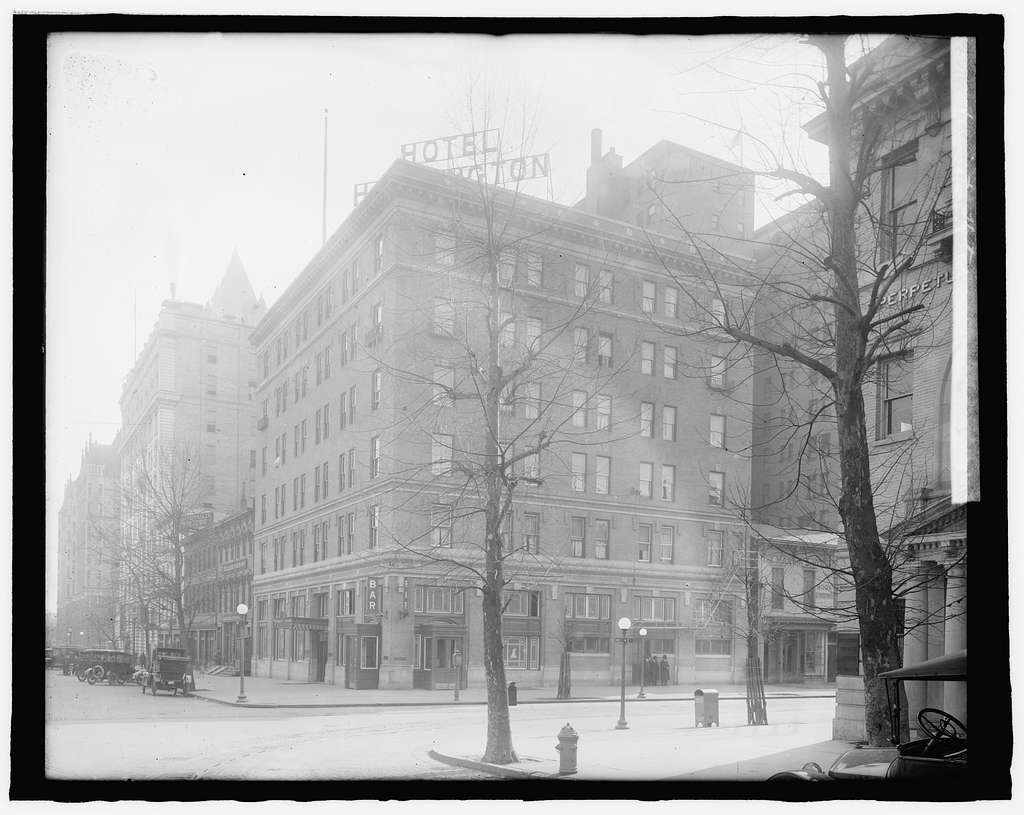
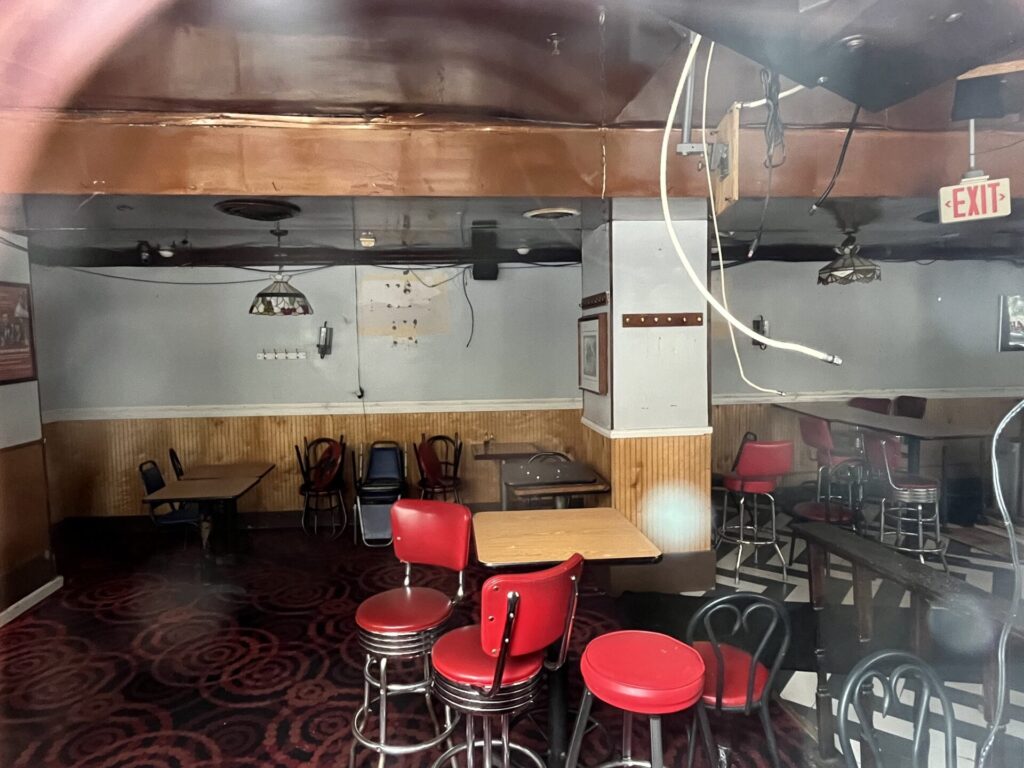
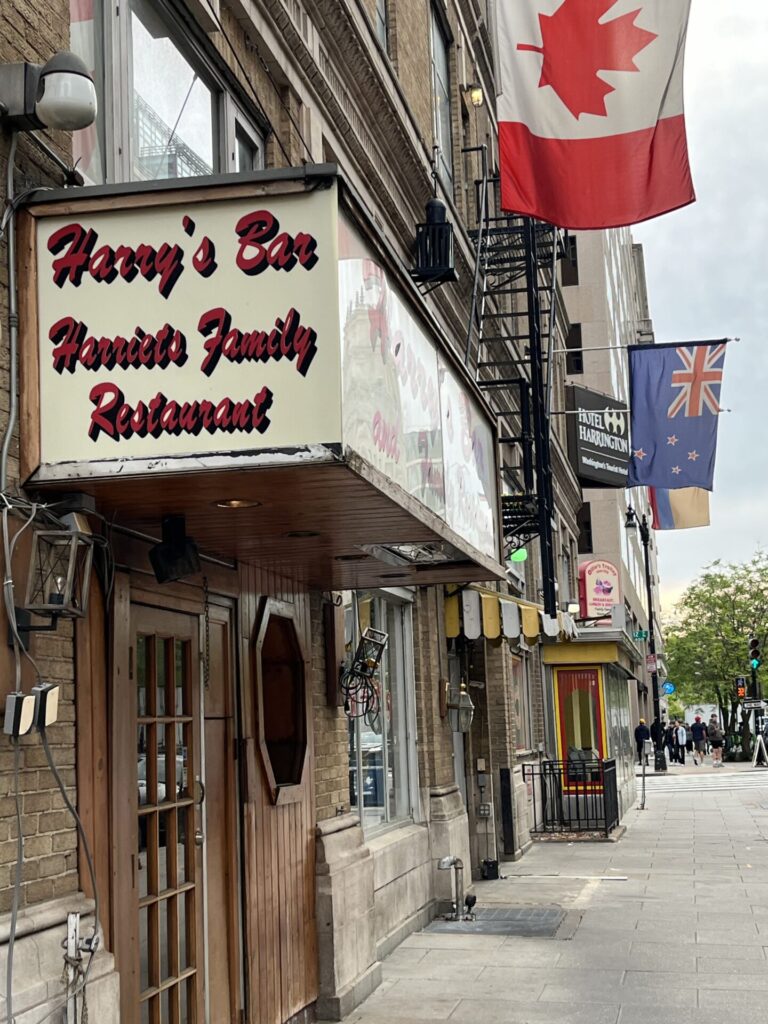
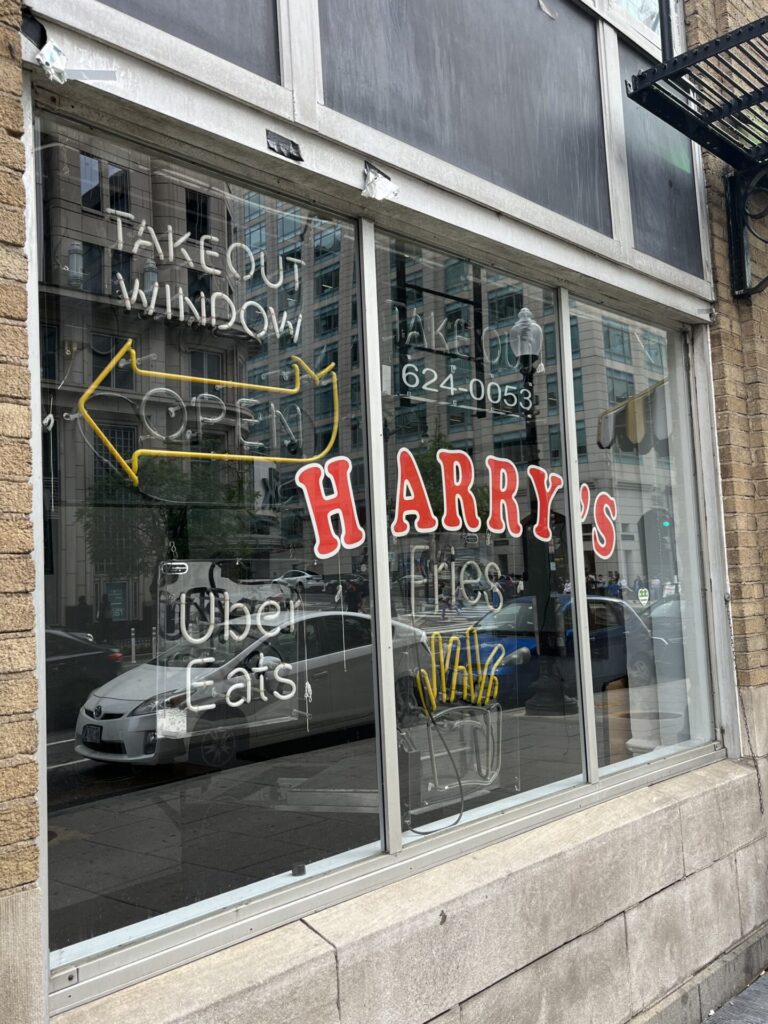
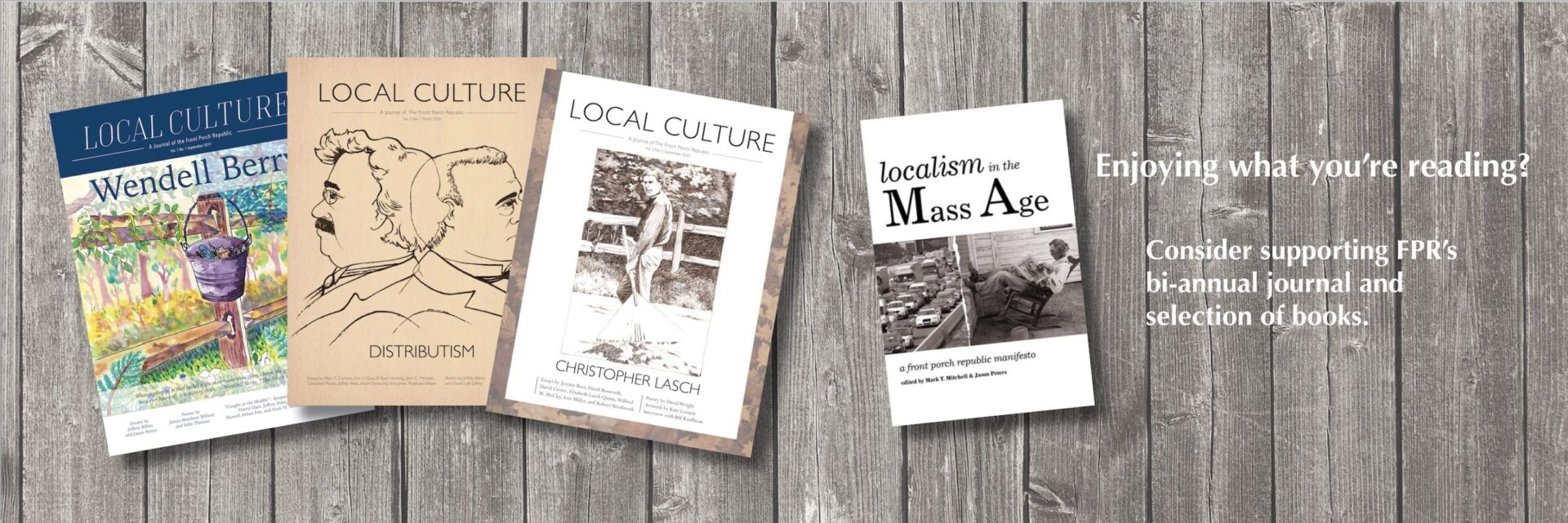







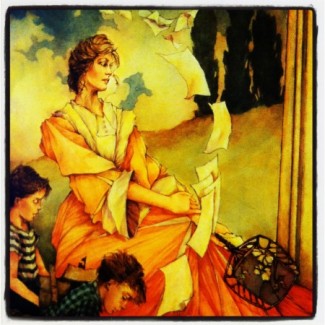
You should interview someone who worked there. Most employees were there more than 20 years. The Clinton family used to stay there when he was in office, the whole family. Janet Reno and her family stayed there. So many famous people stayed there because the press would never think to look there. Lol.. The lobby smelled like burgers and fried food. Like a restaurant. There were 3 restaurants on the main level so that’s what it smelled like. Always, the employees got used to it.
Great idea, Susy. I would love to talk to someone who worked there!
In the early 80’s, I worked at Danker’s (restaurant) down the street from the Harrington. Young Europeans staying there would often show up at our bar. I suppose the Harrington was a step up from a hostel. I also remember watching a World Cup game there in the late 80’s and getting to practice my Portuguese with some of those in attendance. Classic old DC place.
Comments are closed.